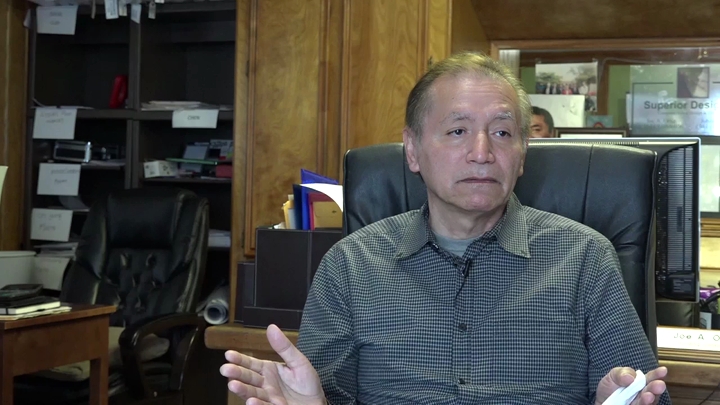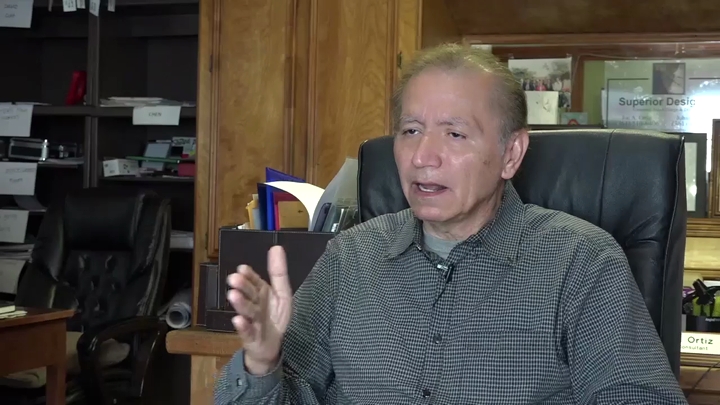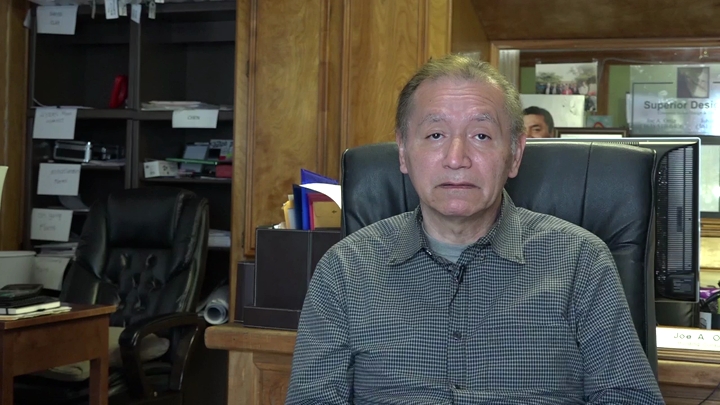Lee / Community Aspects, Part Two
sign up or sign in to add/edit transcript
Proctor: You know, they built us a park in the community and before it was a park, this was the cesspool. This is where all the waste went to from uptown all the way through Dugan. Lee: Avenue M? Proctor: They went in there and tore the tanks down, hauled a bunch of dirt in there and put a park in there, because a lot of the blacks were starting to go uptown to the Candy Cane Park. So, to keep us from coming up that far, they—“Okay, we’ll put y’all a park over here.” Lee: And they called it Martin Luther King Boulevard. (laughs) Proctor: You know, and a lot of people don’t know that that was a cesspool at one time. Lee: It is the shortest street in Dugan. Interviewer: We had heard the fight to get a street named after Martin Luther King was rough. Lee: It goes nowhere. It dead ends in a park, in a cesspool like he says. Interviewer: Do you guys remember anything about the struggle to get the street named after him? Lee: Oh yeah, they had all kinds of struggle trying to get the—they wanted First Street because First Street ran all the way through from one end of town to the other end of town. They said that business would have to relocate or change their names. Proctor: There’s not any big businesses on First Street. Lee: There’s none. Proctor: They’re main business that they were concerned about was the Number One Criminal Justice Drive, which is the jailhouse itself. That’s what they were concerned about. Lee: There’s nothing there and First Street just runs straight through and it would have been ideal to be called Martin Luther King Boulevard instead of giving them a little street, Avenue M, that dead ends in a park and a cesspool. Proctor: Mmm-hmm. Matter of fact, Sixth Street runs you into Avenue M and it’s just one curve, a dip, and then you’re on Third Street. You’re not on Avenue M anymore, you’re just on Third Street. That’s the reason they called the park Martin Luther King Park, but I mean, it just doesn’t add up. Lee: I’ve never seen so many homeless people in Conroe in my life. Proctor: Never. Lee: It seem like—I never—when I was growing up, that’s something you never did see. Nobody was laying out over at Salvation Army and they put all this right in the heart of Dugan, in the black area. You see all these people just laying out in the streets, waiting to go back in. Half of them not working, I don’t know. At one time, Dugan was so infested with prostitution and drugs, they just walked down the street and did what they wanted to do. Interviewer: So, in terms of job opportunities in Conroe for the African American community, what has it been like lately? Lee: I don’t know, I’m sixty-seven years old. (laughs) Interviewer: (laughs) (cross-talk) Proctor: To be honest, there is no job opportunities in Conroe for a black man. If we want to find a job, I’ll have to go to Houston, over off of 59 to Humble. You would have to leave Conroe. I mean, you can find some, and if you do, you’re going to start at the very bottom. It’s almost like we need you, but we don’t want you, you know what I mean? Just like the railroad. The railroad tracks right here in Conroe, Union Pacific and Santa Fe. They done took Dugan as their stopping point. There’s maybe four to five hours out of the day in Dugan, you cannot get in. You can’t get in, you can’t get out, because they have the railroad tracks between First Street and 105 blocked all they way down 3083 to 2854. Then, you may have two trains there waiting, dropping and unhooking, then you have another train that’s traveling northbound from the other side of 45 going towards Willis. Now you have this blocked. If it was some emergency or a house was on fire, they couldn’t even get in. I can count maybe three water hydrants in the Dugan community, maybe two of them work and I think one of the ones that works is way down there on the corner at Tenth and Avenue F. Lee: That’s way down the street. Now what I see, that I think that they’re doing over in Dugan, they’re building a lot of Habitat houses. Lot of people say it’s good, but I say that when they get ready, they going to do like they did in Houston. Come in and bulldoze down all the houses. Put high rises down in Dugan, because downtown Conroe is moving that way. Then, they going to have a few local churches around there. Blacks they’re going to build—they’re going to put them in one big complex building, some kind of big High Park, you know, just like in Good Times— Proctor: To be honest, they’ve already started. That’s what Tall Timbers is. Lee: Yeah, Tall Timbers, like he say. Proctor: It’s an apartment right down the street from the park. Well, it was apartments right off the side of 45, Loop 336 area. Housed a lot of blacks. Housing and low-income families. Here maybe a year, year and a half, two years ago, they put everyone out of these apartments. They refurbished them, redid them, fixed them up nice, and instead of seven-fifty for a two bedroom that you were paying, now it’s fifteen hundred. Lee: The old Bricks? Proctor: No, not the Bricks, I’m talking about the apartments like up on Loop 336 right behind the McDonald’s and things like that— Lee: Oh, oh, oh. I know what you’re talking about. Proctor: —and off of 45. They put everybody out, redid them, jacked the prices up. In that terms, they’re not accepting housing. So, it’s three apartment complexes in Dugan: Bellshire, Tall Timbers, little apartments they call the Bricks, and Park Place, right across from Bellshire. They house—you can go through that right now, every tenant, you may find five to ten white families there. Everything else is going to be black and Hispanic, because their housing—they done pushed us from uptown back over into Dugan where they put us at first. Lee: Well they got you on two streets now, Twelfth Street and Thirteenth Street. Proctor: That’s it. Lee: They pushed them back to the back side of Dugan and Dugan used to be a striving place. There was businesses on every corner, black businesses. Proctor: Mmm-hmm.
| Interview | Interview with Charles Lee and Toddrick Proctor |
| Subjects | Oral Tradition |
| Work | |
| Community Organizations | |
| Community Organizations › Community Organizations and Institution-Building | |
| Geography › Geographical Descriptions | |
| Geography › Places (Cities, Towns, Neighborhoods, and Intersections) | |
| Geography › Geographic Disparities in Infrastructure | |
| People › King, Martin Luther, Jr. | |
| Tags | sign up or sign in to add/edit tags |
| Interview date | 2016-07-21 |
| Interview source | CRBB Summer 2016 |
| Interviewees | Lee, Charles |
| Proctor, Toddrick | |
| Interviewers | May, Meredith |
| Locations | Houston, TX |
| Conroe, TX | |
| Duration | 00:07:08 |
| Citation | "Community Aspects, Part Two," from Charles LeeandToddrick Proctor oral history interview with Meredith May, July 21, 2016, Tammany, TX, Civil Rights in Black and Brown Interview Database, https://crbb.tcu.edu/clips/3146/community-aspects-part-two, accessed December 11, 2025 |






